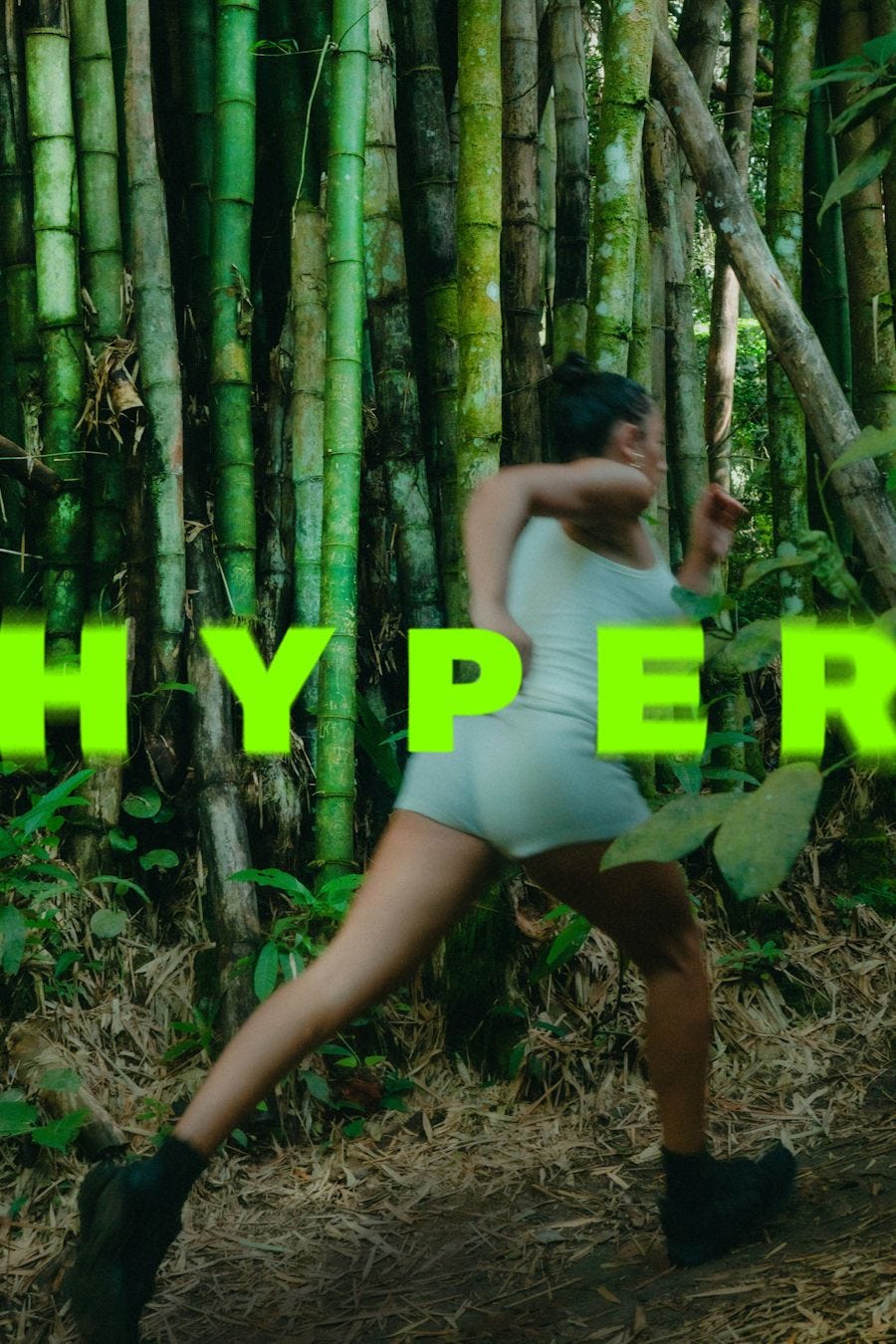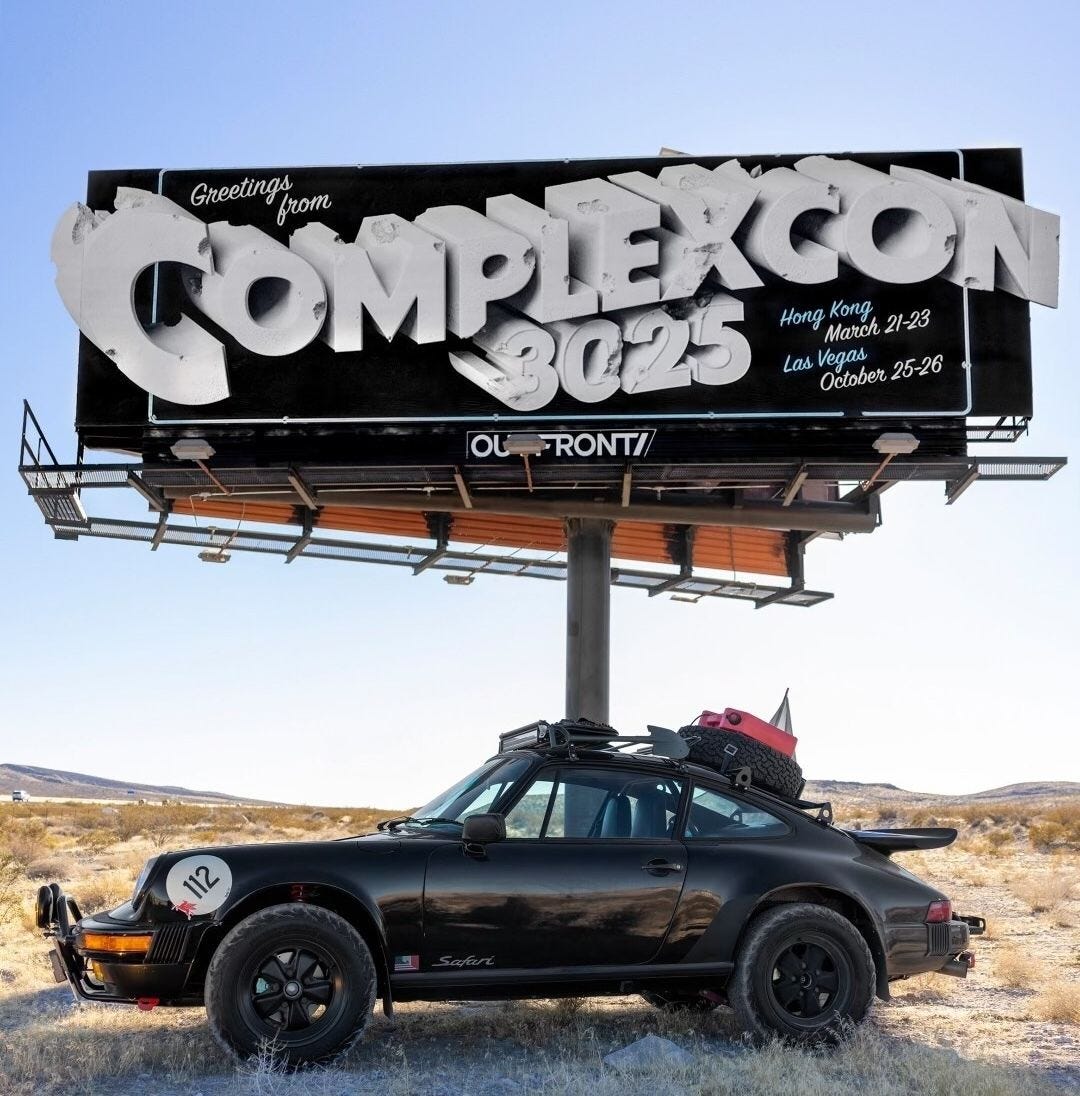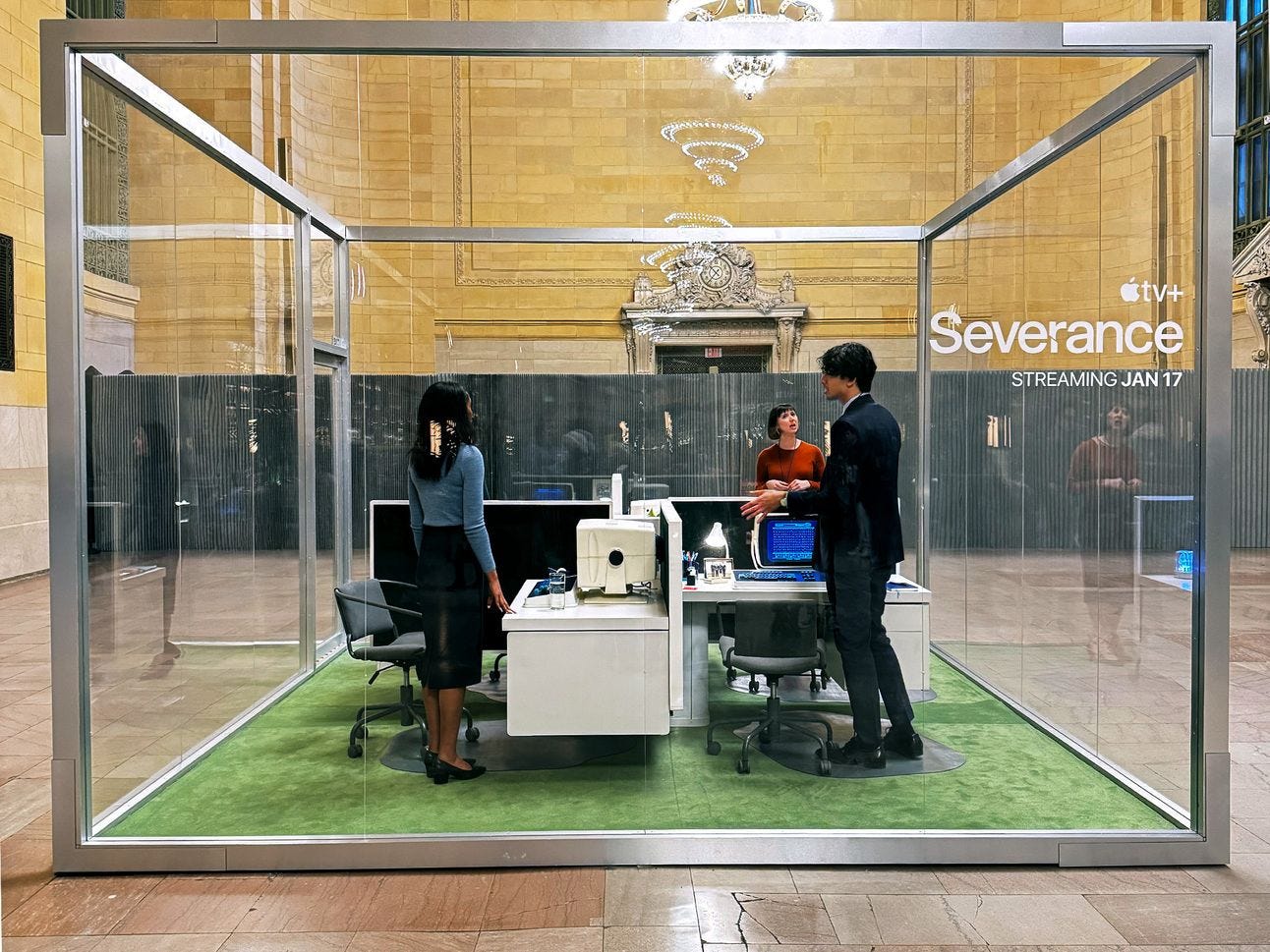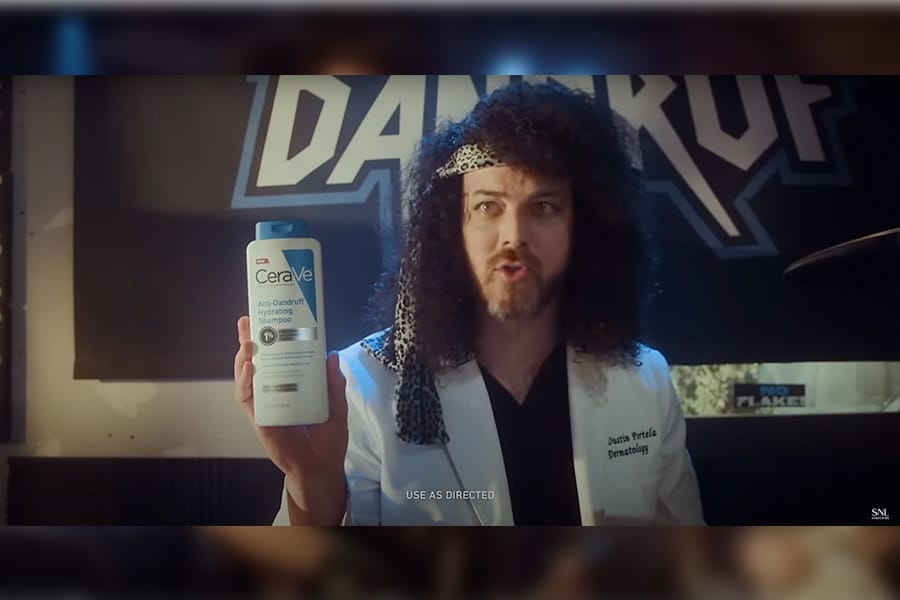Campaign anatomy, treating ourselves & the carousels playbook
+ SXSW Field Report, Brand Myths and more

We’re back and talking about how SXSW can become relevant again, using carousels in your content plan and top myths new brands need to ignore.
You may have noticed our content on HYPER has shifted a bit, more travel, more scene reports and field notes… We’ve seen an opportunity, especially with Clayton in Europe and myself in California, to show way more of whats actually happening, versus just breakdowns of whats online.
In a sea of branding, cultural and marketing newsletters, how do we find our unique perspective? This year, we’re shedding more light on places, happenings and our thoughts on them, and we hope you enjoy. Clayton just touched down in Miami with On, and we’ll hear from him about that next week.
Let’s get into it!
Oren
Treat Yourself
Every creative I know has a MacBook that's hanging on for dear life.... so we're going to talk about treating yourself with a verified refurbished Macbook from the legendary Back Market.
First, if you are really cranking on design and video but need an affordable option, take a look at the M1 chip Macbooks from 2020 - 16gb of RAM and a 512gb drive will run you just $604. In general there's a great sweet spot in an older model M1!

Then if you're a content creator bummed out by your machine's video editing capability, there's steals on Macbook Pro's with 32GB ram, like this one for $990.

These are just a few of the many Macbook Air and Pro deals on Back Market, if you're looking for a machine and don't want to pay the hefty full price, they've got you covered. They sell refurbished tech, which means everything has been tested and restored to perfect working condition by their vetted refurbishers.
Check out these deals (and don't forget the iPod Shuffles and vintage camcorders) at Backmarket.com -- and save $50 on any Macbook over $550 with code OREN50 - valid until end of March!
This segment is in partnership with Back Market.
Carousels Playbook
I’ve been pretty public that my focus as a creator this year is incorporating more carousels into my content, and pushing brands I work with to do the same… because they work. More universal, more sharable, equally weighted in algorithms.
I’ve been doing them myself, and with the Brandfathers, and recap my learnings in the tactical video below if you want to get insights on how to run for you or your brand
And yes, we cover carousels extensively in Cut30, our next sessions starts April 1.
SXSW Field Notes
Recapping my SXSW and some of the most impactful moments, you can also see my recap in partnership with L'Oréal Groupe here.
SXSW is not what it was, but there were still some really impactful panels with the kind of info you simply can't get elsewhere that drove a lot of value for people who are looking for real marketing tactics outside of what we all consume online, which is HEAVILY skewed to a few creator voices (mine included ironically), and sub-10 email newsletters. With prior business print media, and then paywalled ad/marketing websites at an all time low, there simply are less places to learn until we get way more voices making content, and SXSW delivered on that
SXSW improvement

They should take a page out of ComplexCon's book and bring in a yearly creative director. Spitballing, but Kim K with Nadia or similar supporting, Hailey Beiber, Alex Cooper, go more tech leaning with Technology Brothers, lean into music side and just repeat Travis, Drake, Gaga, Kendrick, a council of TikTokers whatever - CD has a curated track, specific activations with their corporates that bats out of their existing weightclass (the way Travis brought Diesel, Vetements etc to ComplexCon). They need more good brands activating, more starpower, more things that get people to go "we have to be here"
Make it easier for Austin retail and companies to activate. ON has a store, they should be able to have a semi-official run-club without breaking the bank or even having to consider if its worth it. Give people moments to have together This year it was basically... Dubai museum, Loreal Airlight Pro blowouts as the two worth mentioning, then in mediocre rollouts Amazon Prime with a... big pool of bubbles... Manychat... giving out free coffee? and kinda... nothing else interesting. The event people didn't even have enough things to recommend to make a good video.
Pay for or let pop culture brands do stunts for free. Repeat the Severance grand central station moment, let Yellowjackets bring massive beehives out, do some insane thing for Paradise, people need a reason to check-in online and they simply didn't give them one.

First talk - Cerave
I got to hear the digital marketing lead at Cerave talk shop with two of their influencers on a panel, breaking down how they've achieved what's essentially complete marketing dominance in their category. Takeaways:
Micro-Culture Monitoring
Cerave maintains an always-on social listening team. This isn't just occasional hashtag tracking – they're constantly monitoring conversations about their products across platforms in real-time. It's a serious investment that pays off in their ability to spot trends and opportunities before competitors.
Influencer Freedom
Their brand briefs for influencers are surprisingly open. Rather than the typical rigid guidelines most brands enforce, Cerave selects partners whose voice they trust and then gives them significant creative latitude.
Playing in the Monoculture
They've figured out how to make a clinical skincare brand relevant in broader cultural moments:
Strategic Super Bowl presence
SNL's 50th anniversary integration
Other cultural touchpoints where you wouldn't typically expect to see skincare
Building a Consistent World
Rather than jumping between different personalities, Cerave invests in long-term relationships with key influencers, building familiar "characters" in their brand universe. In one notable example, an influencer who had been creating content for them eventually starred in a TV commercial– creating continuity for followers who had watched this person's journey with the brand.
Campaign Execution: A Three-Phase Approach
Phase 1: The Viral Moment
They kick things off with attention-grabbing stunts. In a recent campaign, they had their stars carry massive oversized Cerave tubs during fashion week tunnel walks – instant meme content that signaled something was coming.

Phase 2: Full Campaign Rollout
Once they have attention, they deploy across channels with:
Video podcast segments (a format they're particularly bullish on)
A wide influencer network – we're talking 70+ creators ranging from micro-influencers with a few thousand followers to major personalities with millions
Their campaign stars made available to this network of influencers

Phase 3: Community Reinforcement
For the third segment there’s a community participation element where audience can submit as part of the initiative - bringing the entire campaign back to the audience. A key point more large brands should be building into their campaign planning.
Second talk - Kin and Ghia founders
I've been bullish on NA drinks since their inception (as someone who didn't drink for many years and now drinks lightly at best). The category is radically misunderstood and continues to thrive despite constant skepticism. In my opinion, Ghia and Kin remain the two best brands in the space, hands down.
I caught a fascinating panel with the founders of these supposedly competitive brands, who revealed they're actually close friends. They openly discussed their relationship and how they've built the category together rather than treating each other as adversaries.
The Collaborative Blueprint
Their partnership strategies include:
Communication through challenges: When smaller, cheaper brands entered their premium-priced category, they shared intelligence and strategies rather than undercutting each other.
Retail debuts as a united front: They coordinated their entry into major retail spaces so neither had to bear the full weight of explaining the category to skeptical buyers. Showing up together gave credibility to the wider NA movement.
Shared production costs: Perhaps most surprisingly, they've split the costs on molds and production runs for packaging form factors, allowing both to access economies of scale typically reserved for larger players.
This level of collaboration between direct competitors is refreshing to see. More founders should consider building together instead of treating their category like a zero-sum game—especially in emerging spaces where market education benefits everyone.
If you're not familiar with either brand, they're both exceptional. I'm a noted sucker for every Ghia flavor and would highly recommend embracing a bitter palette for 2025. Their Aperitivo Le Spritz is particularly worth seeking out.
Third Talk - L'Oreal USA’s CMO
I caught a surprisingly candid talk from L'Oreal USA’s CMO Han Wen, alongside an NBC exec (who's behind the SNL 50 brand integrations). Even better, I got to interview her afterward and came away with some refreshing insights from someone steering an 11-figure brand portfolio.
The Return of Brand Love
There was a clear admission that the pendulum swung too far toward performance marketing at the expense of brand building. "You can't force someone to listen to your message anymore," she emphasized. We're living in an era of monoculture but multi-touch, where brands need to show up across platforms but with a cohesive story.
What struck me was hearing these insights come directly from a massive conglomerate CMO. This is stuff that DTC brands and content-first marketers have been preaching for years, but it signals a significant shift when the largest players start operating with the same playbook.
Gaming: The Channel to Watch
One of the most interesting revelations was L'Oreal's focus on gaming partnerships beyond the obvious platforms. While everyone's chasing Fortnite integrations, they executed a brilliant collaboration with The Sims (85M active users) to introduce more Black hairstyles to the game.
The partnership generated incredible user-created mods and engagement, serving as a reminder of how wide the gaming landscape truly is. Their approach demonstrated how brands can find perfect three-way wins for consumers, platforms, and themselves if they invest the time to develop thoughtful collaborations rather than chasing the same obvious opportunities.
The Venn Diagram of Action
Perhaps the most practical framework she shared was their approach to trend response. "Being authentic doesn't mean jumping on every trend," she explained. Brands need a "Venn diagram of action" to determine when cultural moments actually intersect with their brand identity.
"When Duo died... is this a moment for YSL? Probably not," she noted (pragmatically). The key is finding genuine consumer overlap with what's happening online rather than forced relevance.
And the most actionable insight… Executing while a moment is still happening is better than waiting for perfect.
10 Brand Myths for New Companies
In this week’s Brandfather’s episode, its 1 on 1 with Ashwinn and I going over misconceptions we’ve found building our businesses and advising others. Especially relevant if you have a new business and are looking to grow. Also on Spotify and Apple Podcasts.
Hyper Reports
Check out our market reports. We spend many hours researching markets, categories, and brands & products within the consumer space so you don’t have to.
The guide to making great Merchandise — HERE — a guide to finding and producing your own merch
Reports on Running, Golf, and Tennis — HERE — a guide to each sport, the market opportunities, and how to launch your own brand
Inquiries? Shoot us a note here: [email protected]
We’d love to chat!
Oren & Clayton ❤️ you




